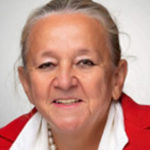On November 15, 2022, the Earth’s population reached eight billion people. Since then, population growth appears to have slowed, but that won’t stop us from reaching nine billion within the next 15 years. That’s nine billion people who will need food, water, shelter, and other critical resources to live according to their human rights.
Achieving zero hunger has been a priority of the United Nations since its Sustainable Development Goals (SDGs) were born in 2012. But we’re far from reaching the mark. In 2024, 733 million people faced hunger. Over two billion people experienced mild to severe food insecurity – that’s around a quarter of the world’s population. And, if nothing changes, the UN predicts that one in five children will be affected by stunting (impaired growth and development from poor nutrition) by 2030.
Solving this problem has proven to be elusive. It stems from a complex interplay of factors, such as economic and gender inequality, conflict, and disease. There’s also the increasingly severe effects of climate change. Extreme weather destroys land, livestock, and crops, and 80 per cent of the world’s hungry people live in areas that are most affected by these climate events. These are not merely externalities of economic development; they are intimately woven into how markets and societies operate.
The UN’s third SDG also calls on the world to ensure healthy lives and promote well-being for all ages. But in places where food is abundant, healthy options remain inaccessible to lower-income households, putting them at higher risk of ailments like type 2 diabetes, high blood pressure, and heart disease, compared to their wealthier peers.
This means that, when addressing hunger worldwide, we must understand that it is the whole society that needs transformation, explained Laurette Dubé, Professor Emerita of Marketing at McGill University, and the Founding Chair of McGill Centre for the Convergence of Health and Economics.
“How can we set market and society so that we don’t address poverty and hunger while creating obesity and environmental damage? How can we do so in a manner that simultaneously creates sustainable prosperity for the individual, enterprise, and society?” she said.
The (invisible) hand that feeds
It’s a challenge with many moving parts. A more equitable food system would nourish populations around the world with sustainable and healthy food. This requires addressing multiple problems at once: climate change, low socioeconomic mobility, consumer behaviour, wasteful food supply chains, among others. Each of these areas needs to be put under the microscope to better understand its impact and how it can be improved.
In a study recently published in Nature Communications, Jeroen Struben, Associate Professor at Emlyon Business School, worked with Dubé to examine one area, specifically: markets.
“We cannot transform the environment, health, and nutrition without placing economics and market mechanisms front and centre,” said Dubé. “Otherwise, we are just talking.”
Struben and Dubé’s paper looked closely at the market mechanisms that affect healthy, equitable food distribution. They found that any market-based solution would require dramatic changes to food market infrastructure, which would involve creating new healthy product categories, consumption practices, norms of exchange, distribution methods, and technologies.
To achieve such far-reaching changes, markets won’t do it alone, explained Dubé. In 1776, economist Adam Smith argued that the “invisible hand” of market forces – where self-interested individuals are free to pursue their own goals – would naturally lead to positive economic and social outcomes. But, in the case of healthy food distribution, as in many complex challenges facing modernity, this has not panned out. Non-market actors must also get involved, said Dubé.
A big enough table for everyone
Struben and Dubé call for convergent innovation: a holistic approach to hunger that combines social, political, and market forces for change. We can’t depend solely on companies to offer cheaper healthy food products, lower their carbon emissions, or address the socioeconomic differences that affect food accessibility. Nor can we expect a single government policy to fix all issues at once, or for consumer habits to shift overnight towards healthier products, explained Struben.
“The one who buys, the one who produces, and the one who makes policy – understanding how they operate both individually and collectively is essential,” he said.
Governments can create education campaigns to promote healthier food choices, helping change consumer behaviour. They can also work on addressing socioeconomic barriers to food accessibility with policies that reduce poverty. At the same time, federal governments can collaborate across international lines and connect with food producers, supply chain operators, energy producers, non-governmental organisations, and other stakeholders to find solutions, explained Struben.
“You have a lot of distributed mechanisms that interact. Therefore, each intervention has little effect individually, but together they can offer high leverage to transform the system,” said Struben.
The African Union recently adopted a strategy along these lines. Fifty-five member states agreed to transform the continent’s agri-food system over 10 years, focusing on sustainable agricultural production, productivity, food processing, and trade.
It’s a positive sign, said Dubé. The international community, like any other community, has its own norms, protocols, and attitudes. The African Union is showing the world that large-scale collaboration is possible.
“The message is, first, that collective action and commitment are critical,” said Struben. “But achieving effective action also involves mindsets and values.”
For more, read “Market pathways to food systems transformation toward healthy and equitable diets through convergent innovation,” by Jeroen Struben, Derek Chan, Byomkesh Talukder, and Laurette Dubé, published in Nature Communications.
This article is based on the study “Linguistic Inclusiveness in Organizations: A Russophone Bank in Post-Soviet Kazakhstan” by professors EunJoo Koo and Anna Kim.
Written by Eric Dicaire, Managing Editor, McGill Delve, delve@mcgill.ca
Featured experts

Laurette Dubé








